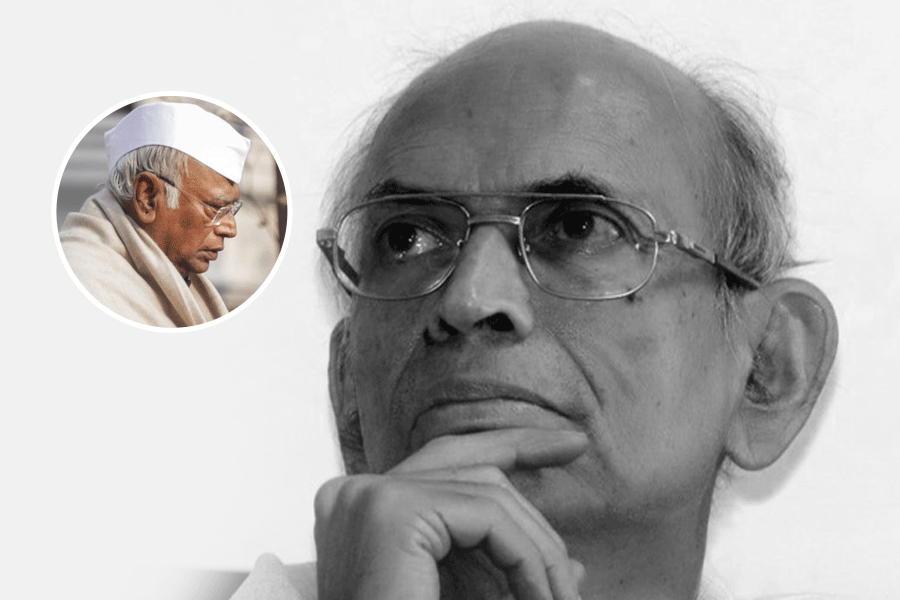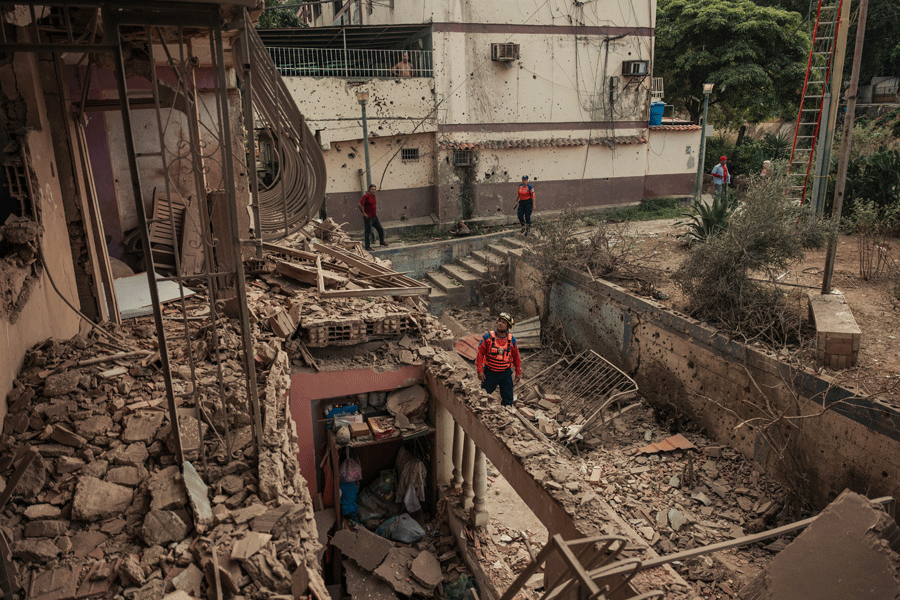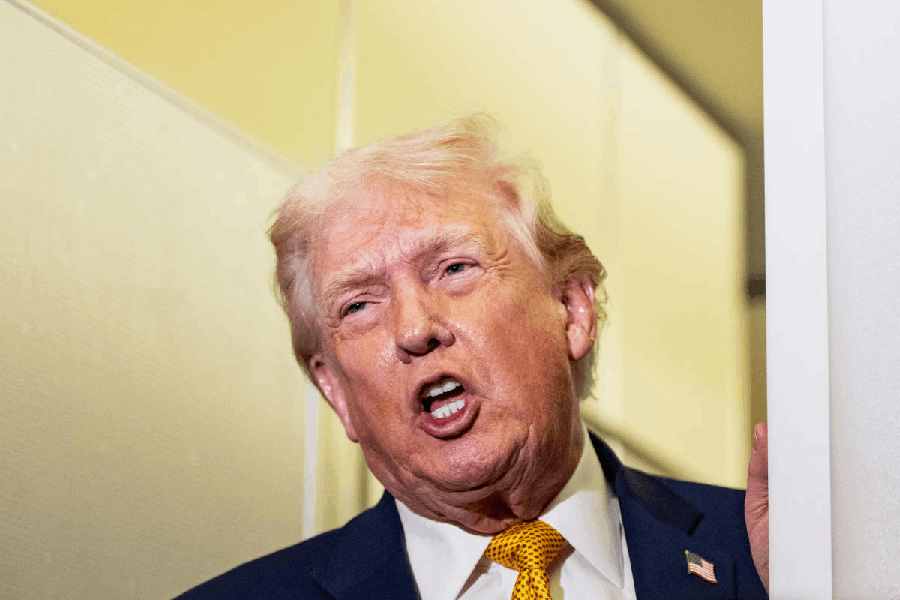|
|
| Failing to assure |
Even as the celebrations at our joining the ‘nuclear club’ start to ebb, contrary information from across the Atlantic is getting shriller. The ministry of external affairs now accepts that there are differing perceptions of the 123 Agreement between India and the United States of America. When such issues become the bone of contention, there is no prize for guessing who will be at the receiving end. Clearly Tarapur has not taught us any lessons.
Throughout this debate, there has at least been unanimity on the need for India to maintain a credible nuclear deterrent. In spite of this, one is disappointed that the subject of testing has been treated in such a cavalier fashion. There has also been deafening silence, from the one community that, at the end of the day, is responsible to the executive to ensure that, should the moment of reckoning ever come, our nuclear weapon systems will deliver on what our nuclear doctrine professes, namely “to credibly deter, and, should this fail, then punitively retaliate”. The reasons are not far to seek. The armed forces have been left out of the nuclear policymaking, research and development and testing loops altogether for reasons best known to successive governments. Not surprisingly, the retired uniformed fraternity has nothing to say, thus depriving the debate of a vital techno-operational viewpoint.
To achieve successful weaponization quite apart from demonstrating the technology itself, the nuclear devices need to be miniaturized, designs need to be ruggedized, mechanical and electronic arming and safing systems need to be installed to prevent unauthorized or accidental detonations, and all these need to be tested for high reliability individually and systemwise, both under static and dynamic conditions. After integration to delivery platforms, the entire weapon system needs to be thoroughly tested through development, field and user trials (except for actual warheads which need their own individual testing) to shake out design/engineering bugs. It is important to highlight that institutionalized procedures regarding weapon standards, quality, testing and certification exist and must not be given the go-by, just because we are dealing with a nuclear weapon system. Unfortunately, this is precisely what has happened.
For reasons of security and different specializations needed, the process of nuclear weaponization was divided between the Bhaba Atomic Research Centre, Defence Research and Development Organization and other laboratories. The military as user was kept out. In his book, Weapons of Peace, Raj Chengappa relates how a confidential review by Arun Singh on instructions of Prime Minister V.P. Singh found the poor coordination between agencies disconcerting and called it an unacceptable situation. With such a shaky foundation, sound testing with user participation should have assumed even greater criticality. P.K. Iyengar, a former chairman of the Atomic Energy Commission who played a key role in Pokhran I, recently told a national daily that nuclear tests are an absolute necessity to maintain a credible nuclear deterrent and such tests are a method by which the requirements of the users, namely the armed forces, are met.
According to the website of the Federation of American Scientists, of the five nuclear weapon states, the US has conducted 1,054 nuclear tests, the former Soviet Union 715, France 210, UK 45 and China 45. It has also been reported elsewhere that of the tests conducted by the US, around 130 low-yield tests were related purely to the safety aspects of operationalizing nuclear weapons and their designs. Since these are nations that have developed, tested and operationally deployed nuclear weapons over decades, clearly there is a message in these statistics. Pakistan is not being mentioned because its warheads are proven Chinese designs and its need to test arises not out of design, development and operational compulsions, but purely out of posturing.
S. Ramgotham in his article, ‘The case for nuclear testing”, in www.rediff.com says: “But even with all that data from a thousand nuclear tests, American scientists are still unsure about the effects of ageing and deterioration on the nuclear parts or the nuclear-explosive package of their warheads. Despite over 50 years of manufacturing and deploying of nuclear weapons, despite years of experience and expertise conducting sub-critical tests and computer simulations, American scientists are still unsure about the reliability of their nuclear weapons. Indeed, some time ago, weapons experts discovered a design flaw in the W-76 warhead, which the Trident’s D-5 missiles carry, which meant that it perhaps would not have exploded when launched.”
Specifically on the safety aspects, it needs emphasis that there is a big gap between testing any weapon, nuclear or otherwise, in laboratory conditions and doing so as an operational tool to be handled in field conditions by the military. The number of safety tests conducted by the US is itself a pointer to the importance of testing, preceding the operationalizing of nuclear weapons into military service and keeping them safe and credible for effective operations.
Recognizing the importance of comprehensive testing as a pre-requisite to successful operationalizing of nuclear weapons, the nuclear weapon states have been keen to bind potential nuclear weapon states into the comprehensive test ban treaty. In this context it is worth recalling what our external affairs minister said in the United Nations general assembly in 1995. “We are glad that negotiations are in progress, but we also note that nuclear weapon states have agreed to CTBT only after acquiring the know-how to develop and refine their arsenals without the need for tests.... Developing new warheads or refining existing ones after a CTBT is in place, using innovative technologies, would be as contrary to the spirit of CTBT as the NPT is to the spirit of non-proliferation.”
This statement implicitly recognizes that testing is an integral step towards new weapon development or refining existing ones and that sub-critical capability needs knowhow generated by actual test data. It is no coincidence that the Hyde Act of 2006, which authorizes the Indo US deal, also forbids the so-called ‘sub critical’ tests that do not generate sustained nuclear chain reactions.
Since tests involve the entire development cycle of technology demonstration, proof of design concept, integration to delivery platforms, development and user acceptance tests, clearly the 1998 tests should have been the beginning of this entire testing and operationalizing process and not the culmination. Had we been serious about our long-term strategic objectives, we would have continued with further tests towards achieving the ultimate objective of arriving at a weapon system that had the stamp of the user as an operationally usable, safe and reliable system. Only then would the world have considered our nuclear weapons capability as credible enough to deter.
Earlier in an article, A. Gopalakrishnan, the former chairman of the Atomic Energy Regulatory Board, made the point that “the assertion by some senior scientists in 1998 that the country had successfully conducted one thermonuclear weapon test, and therefore need not test again, was strongly repudiated at that time by both national and international nuclear weapon experts”. Nevertheless, so carried away were our scientists with Pokhran II that painstaking and rational analysis of test results, that is, the very object of testing, was short-circuited and the scientists reached the conclusion that further tests were not needed.
Clearly our strategic nuclear programme was now being driven not by cold technical and operational logic, but by hollow posturing. This nuclear and military amateurishness has by no means gone unnoticed within the confines of the elite nuclear club of five and the larger brotherhood of the NSG. Whatever spin we may want to put on this after the NSG waiver, the bottom line is this. If we test, the waiver is off. So if knowing this, we are happy to celebrate the waiver, it only suggests that we do not consider further development tests towards operationalizing our nuclear arsenal necessary, a euphoric conclusion that was reached hastily and controversially after the 1998 tests and which still remains our nuclear mantra. Our nuclear deterrent will thus remain underdeveloped, unreliable and unsafe.
None of these knee-jerk reactions befits a nation that has embarked on safeguarding its national security in the international nuclear environment, a nation that through sixty years has zealously nurtured and guarded its military nuclear potential, through thick and thin. Now that we have convinced ourselves that we have a good deal, we must also accept the inevitable consequence. Our nuclear doctrine is good in theory, but not credible in practice. Those who know better are quite happy to let us bask in our self-created glory without being deterred. As long as we get drawn into the folds of the NPT and CTBT, however indirectly, they are quite happy to massage our nuclear-power ego.
While the nuclear powers can rest on their laurels for having furthered their non-proliferation agenda, the danger to us is from within. The nation sincerely believes that we have the ability to deliver on our nuclear doctrine. Correspondingly, its strategic foreign policy and security postures will be moulded on this false premise. Should the time ever come to put this capability to test, our nuclear emperor will be found to have no clothes.
The author is a retired air marshal of the Indian Air Force











